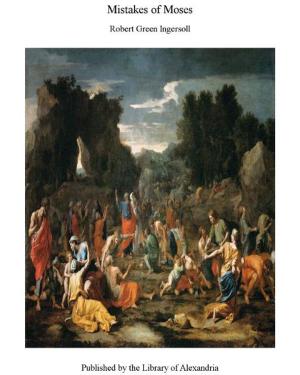| Author: | George Manville Fenn | ISBN: | 9781465620903 |
| Publisher: | Library of Alexandria | Publication: | March 8, 2015 |
| Imprint: | Language: | English |
| Author: | George Manville Fenn |
| ISBN: | 9781465620903 |
| Publisher: | Library of Alexandria |
| Publication: | March 8, 2015 |
| Imprint: | |
| Language: | English |
The sun shone down hotly on the hill-side, and that hill was one of a range of smooth rolling downs that ought to have been called ups and downs, from the way they seemed to rise and fall like the sea on a fine calm day. Not quite, for at such a time the sea looks as blue as the sky above it, while here on this particular hot day, though the sky was as blue as a sapphire stone, the hills were of a beautiful soft green, the grass being short and soft, and as velvety as if Nature had been all over it regularly with her own particular mowing-machine. But the only mowing that had been done to that grass was by the cropping teeth of the many flocks of sheep whose fleeces dotted the downs with soft white where they nibbled away, watched by the shepherds in their long smock frocks with turn-down collars and pleatings and gatherings on breast and back, and slit up at the sides from the bottom so as to give the men’s legs room to move freely when they ran after a restive sheep to hook him with the long crook they carried and bring him kicking and struggling by hook or by crook to the grass. It was just over a thousand years ago, and, in spite of all the changes fashion has made, plenty of shepherds and farm labourers still wear the simple old Saxon dress then worn by King Ethelwulf’s serfs, though without the girdle worn then. There were four boys on the steepest slope of that hill-side—four fair-haired, sun-browned, hearty-looking boys—and they wore smock frocks, belted in at the waist, of fine, soft, woollen material, woven out of the fleeces of the sheep; for they were King’s sons, the sons of the King whose flocks were feeding on the hill-side in Berkshire, where he had his Court. It was as peaceful there as it was soft and beautiful; for though news came from time to time of the cruel acts of the fierce Norsemen who had come across the sea in their great row and sailing galleys full of fighting-men, they were far away from the King’s home, so that Queen Osburga felt no anxiety about her boys being out on the downs at play, enjoying themselves and growing strong. This she loved to see; though, being a very learned woman herself in days when noble people thought no shame to have to say: “I cannot read or write,” she sighed to find how very little her four sons cared for such things as gave her delight. They all loved to be out in the open air along with Cerda, the Saxon jarl, one of the King’s chief fighting-men, who urged them to learn how to use the broadsword. After setting one of the men to make swords for the boys—not of hard cutting steel, but of good tough ash-wood—and then matching them two against two, he would sit and roar with laughter at the blows they gave and took.
The sun shone down hotly on the hill-side, and that hill was one of a range of smooth rolling downs that ought to have been called ups and downs, from the way they seemed to rise and fall like the sea on a fine calm day. Not quite, for at such a time the sea looks as blue as the sky above it, while here on this particular hot day, though the sky was as blue as a sapphire stone, the hills were of a beautiful soft green, the grass being short and soft, and as velvety as if Nature had been all over it regularly with her own particular mowing-machine. But the only mowing that had been done to that grass was by the cropping teeth of the many flocks of sheep whose fleeces dotted the downs with soft white where they nibbled away, watched by the shepherds in their long smock frocks with turn-down collars and pleatings and gatherings on breast and back, and slit up at the sides from the bottom so as to give the men’s legs room to move freely when they ran after a restive sheep to hook him with the long crook they carried and bring him kicking and struggling by hook or by crook to the grass. It was just over a thousand years ago, and, in spite of all the changes fashion has made, plenty of shepherds and farm labourers still wear the simple old Saxon dress then worn by King Ethelwulf’s serfs, though without the girdle worn then. There were four boys on the steepest slope of that hill-side—four fair-haired, sun-browned, hearty-looking boys—and they wore smock frocks, belted in at the waist, of fine, soft, woollen material, woven out of the fleeces of the sheep; for they were King’s sons, the sons of the King whose flocks were feeding on the hill-side in Berkshire, where he had his Court. It was as peaceful there as it was soft and beautiful; for though news came from time to time of the cruel acts of the fierce Norsemen who had come across the sea in their great row and sailing galleys full of fighting-men, they were far away from the King’s home, so that Queen Osburga felt no anxiety about her boys being out on the downs at play, enjoying themselves and growing strong. This she loved to see; though, being a very learned woman herself in days when noble people thought no shame to have to say: “I cannot read or write,” she sighed to find how very little her four sons cared for such things as gave her delight. They all loved to be out in the open air along with Cerda, the Saxon jarl, one of the King’s chief fighting-men, who urged them to learn how to use the broadsword. After setting one of the men to make swords for the boys—not of hard cutting steel, but of good tough ash-wood—and then matching them two against two, he would sit and roar with laughter at the blows they gave and took.










![Cover of the book [19th Century Actor] Autobiographies by George Manville Fenn](https://www.kuoky.com/images/2015/march/300x300/9781465503732-TEET_300x.jpg)




